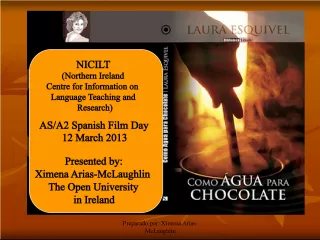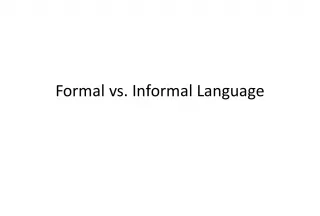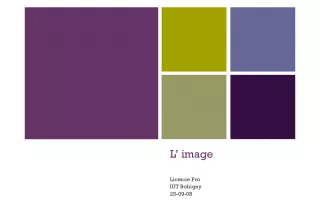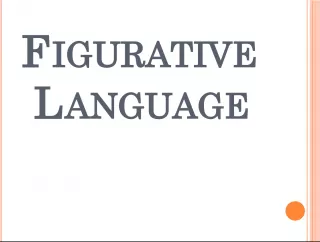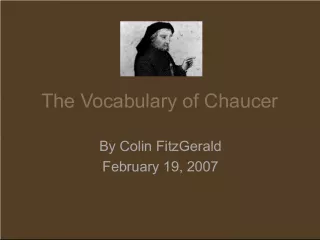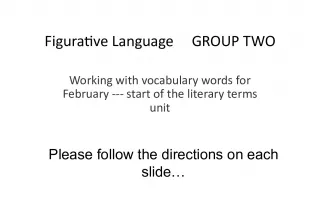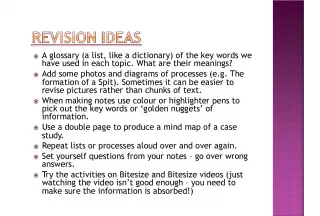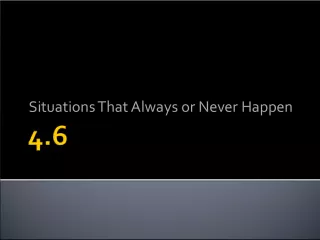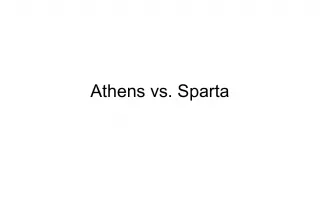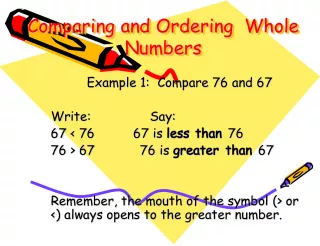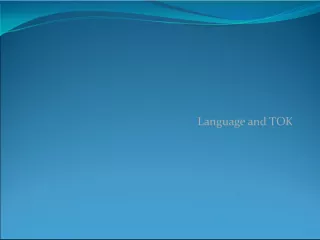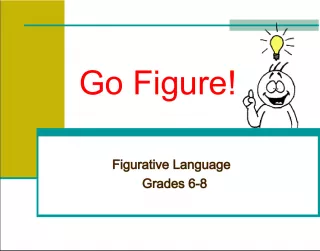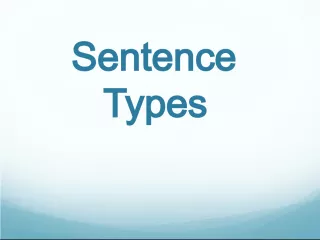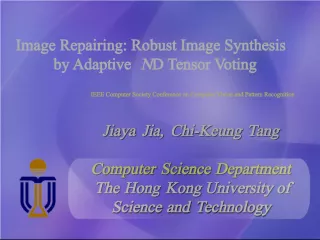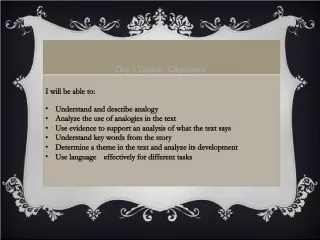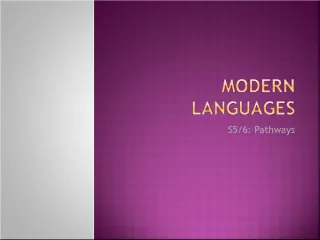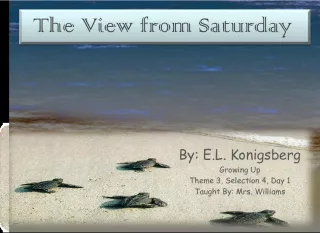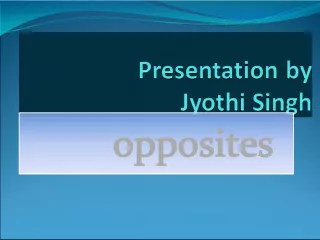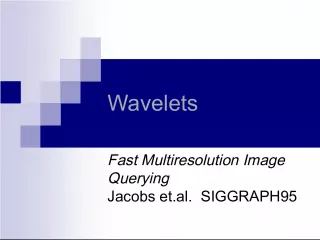The Language and Cinema Double: Comparing Words and Images


This project, undertaken by 3rd grade students at the Eliceo Scientifico G. Torelli school in Fano, presents a unique exploration of the relationship
- Uploaded on | 1 Views
-
 sannihietala
sannihietala
About The Language and Cinema Double: Comparing Words and Images
PowerPoint presentation about 'The Language and Cinema Double: Comparing Words and Images'. This presentation describes the topic on This project, undertaken by 3rd grade students at the Eliceo Scientifico G. Torelli school in Fano, presents a unique exploration of the relationship. The key topics included in this slideshow are . Download this presentation absolutely free.
Presentation Transcript
Slide1CLASS 3RD E C L A S S 3 R D E L I C E O S C I E N T I F I C O G . T O R E L L I - F A N O P P R R E E S S E E N N T T S S
Slide2READING A MOVIE, READING A MOVIE, READING READING A A MOVIE, MOVIE, WATCHING WATCHING A A NOVEL NOVEL C C O O M M E E N N I I U U S S P P R R O O J J E E C C T T 2 2 0 0 0 0 4 4 / / 2 2 0 0 0 0 5 5
Slide3The comparison (or diversity) between words and images that is language and cinema D O U B L E A R T I C U L A T I O N THE LANGUAGE p h o n e m e m o r p h e m e b + r + e + a + d d + o + g t + r + e + e b r e a d d o g t r e e signifier signified
Slide4Rapport (ou diversité?) entre parole etimage, c’est à dire entre langue et cinéma A R T I C U L A T I O N D O U B L E LA LANGUE p h o n e m e m o r p h e m e p + a + i + n c + h + i + e + n a + r + b + r + e p a i n c h i e n a r b r e signifiant signification
Slide5Rapporto (o diversità?) tra parola eimmagine, cioè tra lingua e cinema A R T I C O L A Z I O N E D O P P I A LA LINGUA f o n e m i m o r f e m i p + a + n + e c + a + n + e a + l + b + e + r + o p a n e c a n e a l b e r o significante significato
Slide6The comparison (or diversity) between words and images that is language and cinema S I N G L E A R T I C U L A T I O N THE CINEMA Simultaneously both signifier and signified
Slide7AR T I C U L A T I O N S I N G U L I E R E LE CINÉMA Rapport (ou diversité?) entre parole et image, c’est à dire entre langue et cinéma Simultanéité du signifiant et signification
Slide8Rapporto (o diversità?) tra parola eimmagine, cioè tra lingua e cinema A R T I C O L A Z I O N E S I N G O L A IL CINEMA Simultaneità tra significante e significato
Slide9CO M P A R I S O N B E T W E E N C I N E M A A N D R E A L I T Y REALITY I m a g e c i n e m a t o g r a p h i c P h o t o o f r e a l i t y S o u n d - m u s i c C o l o u r M o v e m e n t W o r d = s y m b o l Y o u m u s t k n o w t h e c o d e A r b i t r a r i n e s s C o n v e n t i o n a l i t y The comparison (or diversity) between words and images that is language and cinema
Slide10AN A L O G I E D U C I N É M A A V E C L A R É A L I T É RÉALITÉ I m a g e c i n e m a t o g r a p h i q u e P h o t o g r a p h i e d e l a r é a l i t é S o n - m u s i q u e C o u l e u r M o u v e m e n t M o t = s y m b o l e I l f a u t c o n n a i t r e l e c o d e S i g n e a r b i t r a i r e S i g n e c o n v e n t i o n n e l Rapport (ou diversité?) entre parle et image, c’est à dire entre langue et cinema
Slide11Rapporto (o diversità?) tra parola eimmagine, cioè tra lingua e cinema R A P P O R T O D E L C I N E M A C O N L A R E A L T À REALTÀ I m m a g i n e c i n e m a t o g r a f i c a F o t o g r a f i a d e l l a r e a l t à S u o n o - m u s i c a C o l o r e M o v i m e n t o P a r o l a = s i m b o l o O c c o r r e c o n o s c e r e i l c o d i c e A r b i t r a r i e t à C o n v e n z i o n a l i t à
Slide12Conventionality and Arbitrarinessof the language • Words are arbitrary and conventional; • There’s no necessary correlation between signifier and significant; • Words are symbolic; • Communication is based on the knowledge of “the code”.
Slide13Signes Conventionelles etSignes Arbitraires • Les paroles sont arbitraires et conventionelles ; • Il n’y à pas aucun rapport du nécessité entre signifiant et signification ; • Les paroles sont symboliques ; • Dans la communication verbale la connaissance du code linguistique spécifique est necessaire .
Slide14Convenzionalità e Arbitrarietàdella lingua • Le parole sono arbitrarie e convenzionali; • Non c’è alcun rapporto di necessità tra significante e significato; • Le parole sono simboliche; • La comunicazione verbale si basa sulla conoscenza del codice.
Slide15Conventionality and Arbitrarinessin the cinema • With images the knowledge of the code is minium; • Images always need to refer to a specific reality; • The cinematographic image (= the iconic reproduction + sound/music + colour + movement) communicates an impression of reality.
Slide16Conventionnalité et Arbitrairietédans le cinéma • Dans l’image la connaissance du code est minimale ; • L’image fait necessairment reference à une réalité specifique ; • L’image cinematographique (=reproduction iconique + son + musique + couleur + mouvement) communique un impression de la réalité par rapport des mots .
Slide17Convenzionalità e Arbitrarietànel cinema • Nell’immagine la conoscenza del codice è minima; • L’immagine fa necessariamente riferimento ad una realtà specifica; • L’immagine cinematografica (= riproduzione iconica + suono + musica + colore + movimento) comunica un’impressione di realtà più delle parole.
Slide18BU T Conventionality and Arbitrariness in the cinema
Slide19MA I S Conventionnalité et Arbitrairieté dans le cinéma
Slide20MA Convenzionalità e Arbitrarietà nel cinema
Slide21Conventionality and Arbitrarinessin the cinema • The cinematographic image is BI- DIMENSIONAL; • Embraces a part of time and space in the frame; • Changes the actual dimensions; • Changes the colours of reality; so it uses specific conventions.
Slide22• L’image cinematographique a deux dimensions ; • Renferme une partìe de l’espace et du temps dans le cadrage ; • Modifie les dimensions reélles ; • Modifie les couleurs du reél; donc utilise des conventions . Conventionnalité et Arbitrairieté dans le cinéma
Slide23• L’immagine cinematografica è bidimensionale; • Racchiude una parte di spazio e di tempo nell’inquadratura; • Modifica le dimensioni reali; • Modifica i colori del reale; usa quindi delle convenzioni. Convenzionalità e Arbitrarietà nel cinema
Slide24Literature and CinemaDenotation = literal meaning objective Connotation = hidden meanings
Slide25Literature et CinémaDénotation = signification objective Connotation = signification complexe
Slide26Letteratura e CinemaDenotazione = significato letterale oggettivo Connotazione = significati nascosti
Slide27DENOTATIONThe first level of signifying, the registration of reality in the most objective manner (documentary; reality show; scientific text). Literature and Cinema
Slide28DENOTATIONLa première marche de la signification, la reproduction de la realité, ne la manière la plus objective (documentaire ; reality show). Literature et Cinéma
Slide29DENOTAZIONEIl primo livello del significato, la registrazione della realtà in maniera oggettiva (documentario; reality show; testi scientifici). Letteratura e Cinema
Slide30CONNOTATIONIt is the second level of signifying of the filming image. The camera’s presence is felt; it doesn’t reproduce only reality but adds meaning to what it shows. Literature and Cinema
Slide31CONNOTATIONC’est la seconde marche de la signification dans l’image filmique. On avertit la présence de la caméra; elle ne reproduit pas seulement la realité, mais ajoute en plus des significations. Literature et Cinéma
Slide32CONNOTAZIONEÈ il secondo livello del significato nell’immagine filmica. Si avverte la presenza della macchina da presa, che non riproduce solo la realtà ma aggiunge ulteriori significati. Letteratura e Cinema
Slide33UNIVERSALITY The word is limited in the circle of whom knows the language. The image, instead, is universal; it doesn’t have limits of language, of vocabularly and of grammar (although the sensivity of the spectator can be different). Universality, Abstraction/Substantiality, Temporal dimension
Slide34UNIVERSALITÀ La parola è limitata alla cerchia di coloro che conoscono una lingua;. L’immagine, invece, è universale, non conosce frontiere di lingua, di vocabolario, di « grammatica » (anche se la sensibilità degli spettatori può essere diversa). Universalità, Astrazione/Concretezza, Dimensione temporale
Slide35ABSTRACTION/SUBSTANTIALITY The cinematographic sign is never comparable to an abstract idea in a direct way. To say “sadness” through an image you have to combine the view of water (=tear) with the view of the eye (=to shed tears); therefore you need to focus single images. The word expresses the concept, it has the capability of abstraction and synthesis; it is related to solid objects. Universality, Abstraction/Substantiality, Temporal dimension
Slide36ASTRAZIONE/CONCRETEZZA Il segno cinematografico non è mai rapportabile ad una idea astratta in modo diretto. Per dire “tristezza” con l’immagine bisogna combinare il segno dell’acqua (=lacrima) con quella dell’occhio (=piangere); bisogna cioè combinare inquadrature singole. La parola esprime il concetto, ha capacità di astrazione e di sintesi; è riferibile a oggetti concreti. Universalità, Astrazione/Concretezza, Dimensione temporale
Slide37TEMPORAL DIMENSION In the language, the temporal dimensions are past, present and future, with numerous shades of meaning. In the cinematograpic image we see exactly what happens in the front of us. Universality, Abstraction/Substantiality, Temporal dimension
Slide38DIMENSIONE TEMPORALE Nel linguaggio le dimensioni temporali sono passato, presente, futuro con sfumature numerosissime. Nell’immagine cinematografica si vede unicamente ciò che accade dinnanzi ai vostri occhi. Universalità, Astrazione/Concretezza, Dimensione temporale
Slide39« T h e c i n e m a i s a s e q u e n c e o f s c e n e s i n a p r e s e n t h i e r a r c h i z a b l e o n l y i n t h e e d i t i n g p h a s e » U m b e r t o E c o Universality, Abstraction/Substantiality, Temporal dimension
Slide40« I l c i n e m a è u n a s u c c e s s i o n e d i r a p p r e s e n t a z i o n i d i u n p r e s e n t e g e n e r a l i z z a b i l i s o l o i n f a s e d i m o n t a g g i o » U m b e r t o E c o Universalità, Astrazione/Concretezza, Dimensione temporale
Slide41THE END THE END READING A MOVIE, WATCHING A NOVEL REALISATION Class 3 RD E Abboni Arianna Battisti Matteo Battisti Nicolò Bonazelli Daniele Campari Milena Carboni Valentina Caselli Sebastiano Caverni Alessandro Cicoli Alessandro Cicoli Francesco Dragoi Adelina Fuligni Alessia Gaudenzi Valeria Gervasi Lorenzo Ghiandoni Nadir Giombetti Giulia Hebovija Marsida Letizi Vania Marinelli Giacomo Paolucci Marco Pazzaglia Sonia Pietrelli Giulia Pompili Caterina Sanchioni Marco Serfilippi Francesco Signoretti Carolina Ubaldi Laura Zandri Giulia COORDINATION prof.ssa Paola Fazi
